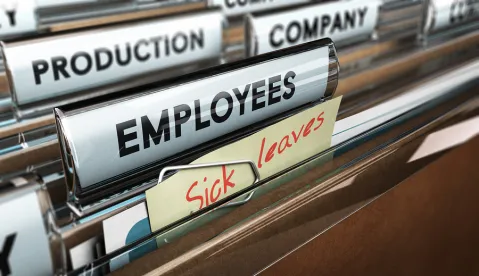Companies should begin preparing now for the new Westchester County Earned Sick Leave Law (“WCESLL”), which becomes effective on April 10, 2019. Here are five steps to get employers started.
1. Determine Whether Your Company Must Provide Employees More Paid Time Or Expand The Reasons Employees Can Use Paid Time Benefits.
Employers should confirm they provide eligible employees with the minimum amount of leave they are entitled to under the WCESLL. At the start of employment, or on July 9, 2019, whichever is later, all eligible employees, except domestic workers, are entitled to accrue a minimum of one hour of sick leave for every 30 hours worked, up to 40 hours per year. Rather than calculate the accrual of earned sick leave, employers can provide eligible employees with a combined 40 hours or more of sick leave and other paid time off (“PTO”) benefits per year. Eligible employees who work for companies with five or more employees are entitled to paid sick leave and eligible employees who work for companies with less than five employees are entitled to unpaid sick leave. Employers must allow eligible employees to use sick leave for all the reasons outlined in the WCESLL, not just absences due to an employee’s own illness. Unionized employers must review their collective bargaining agreements and the specific WCESLL rules that apply to collective bargaining agreements.
2. Develop A Process To Track Employees Who Only Work In Westchester On An Occasional Basis.
Companies may have to comply with the WCESLL even if their employees are not “based” in Westchester. Absent clarifying regulations or guidance, it appears any employee who works 80 hours or more in a calendar year in Westchester County is eligible for sick leave. Thus, employees who only work in Westchester on an occasional basis (e.g., sales calls or covering shifts) may become eligible for sick leave as soon as they reach the 80-hour threshold. Tracking such time will be a considerable challenge for many if not most employers.
3. Update Your Sick Leave And Paid Time Policies And Procedures.
Employers should update their sick leave and paid time policies to ensure they satisfy the minimum standards under the WCESLL. For example, employers must allow employees to carry over up to 40 hours of unused accrued sick leave into the next year. Additionally, an employer can only delay an employee’s ability to use earned sick leave until they have worked for the employer for 90 days. Employers also may have to modify the process employees follow or documentation employees submit to support sick leave requests. Employers with NYC operations should keep in mind that the WCESLL is not identical to New York City’s Earned Sick and Safe Time Law; for example, the reasons for leave under the WCESLL are not as expansive as NYC law.
4. Prepare For The Notice And Posting Requirements.
On the start of employment or by July 9, 2019, whichever is later, employers must give employees a copy of the WCESLL and written notice of how the law applies to them. Employers must also display a copy of the WCESLL and a poster in English, Spanish and any other language deemed appropriate by the County of Westchester, in a conspicuous location. A carefully drafted written policy describing how employees can request to use sick leave is recommended and will go a long way to ensure employees understand their rights and obligations under this law.
5. Coordinate WCESLL Benefits With FMLA, NYPFL And Voluntary Leave Benefits.
In some instances, time covered under the WCESLL will overlap with leave provided under the federal Family and Medical Leave Act (FMLA), the New York Paid Family Leave Act (NYPFL), and/or voluntary paid or unpaid leave benefits. Employers should confirm that they are coordinating these leaves properly to ensure time covered under the WCESLL is not being counted improperly during such leaves while, conversely, avoiding any unnecessary “stacking” of such leaves.






 />i
/>i

